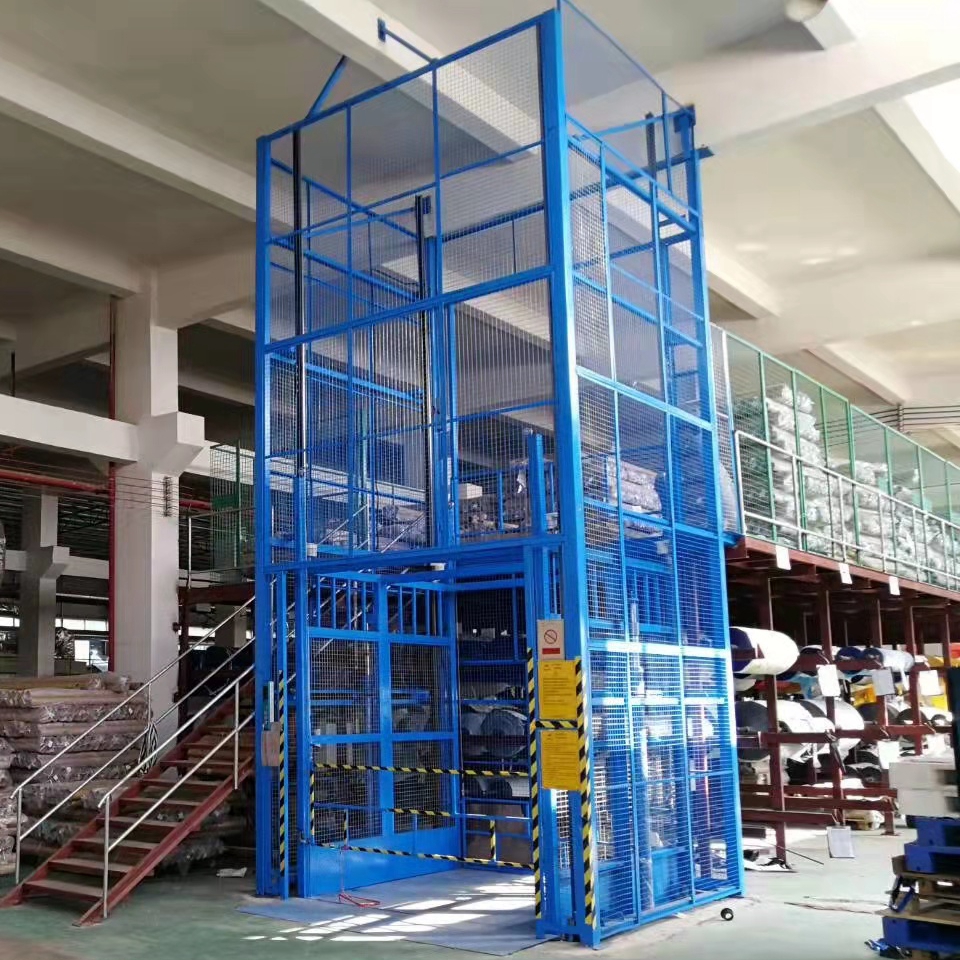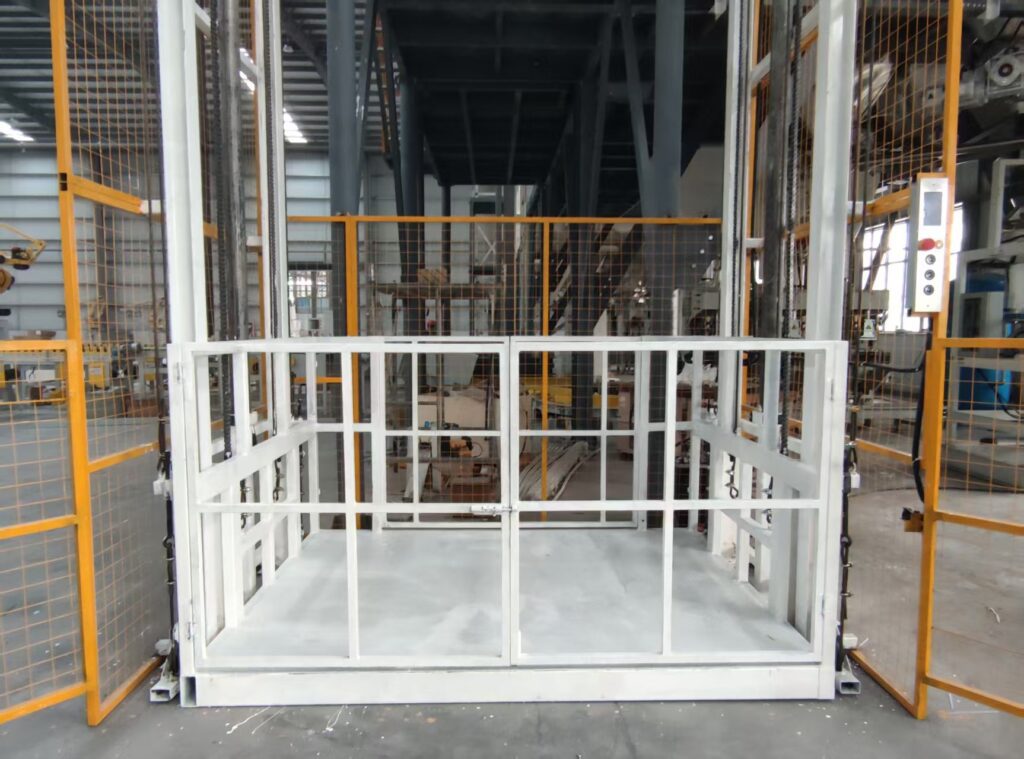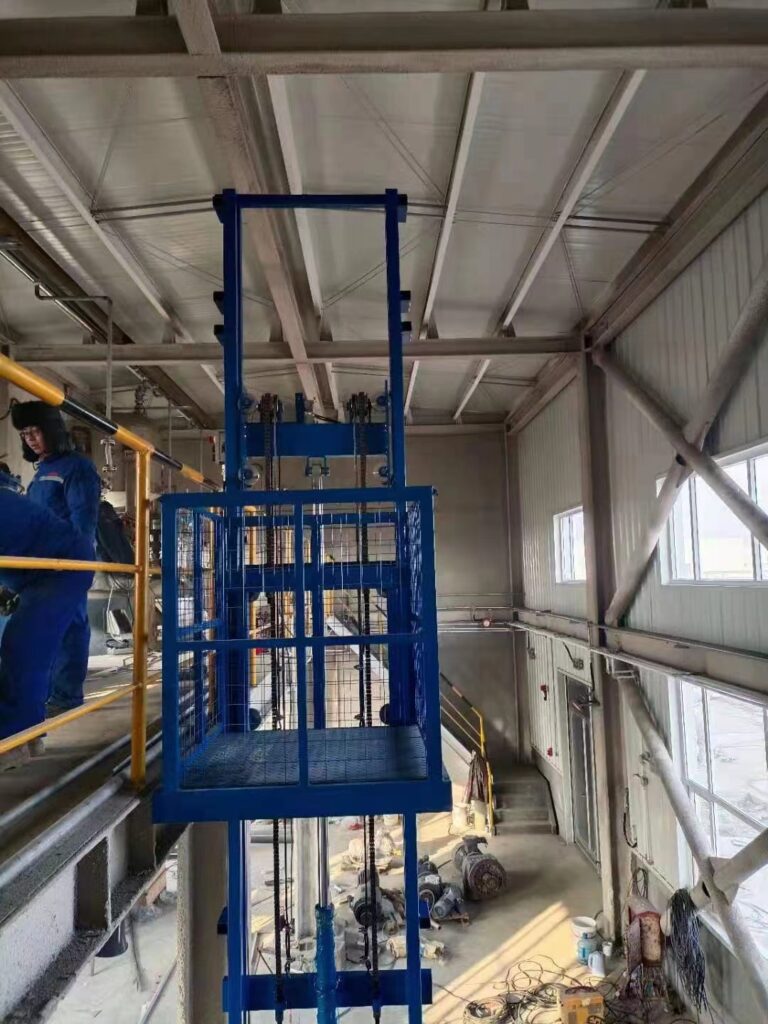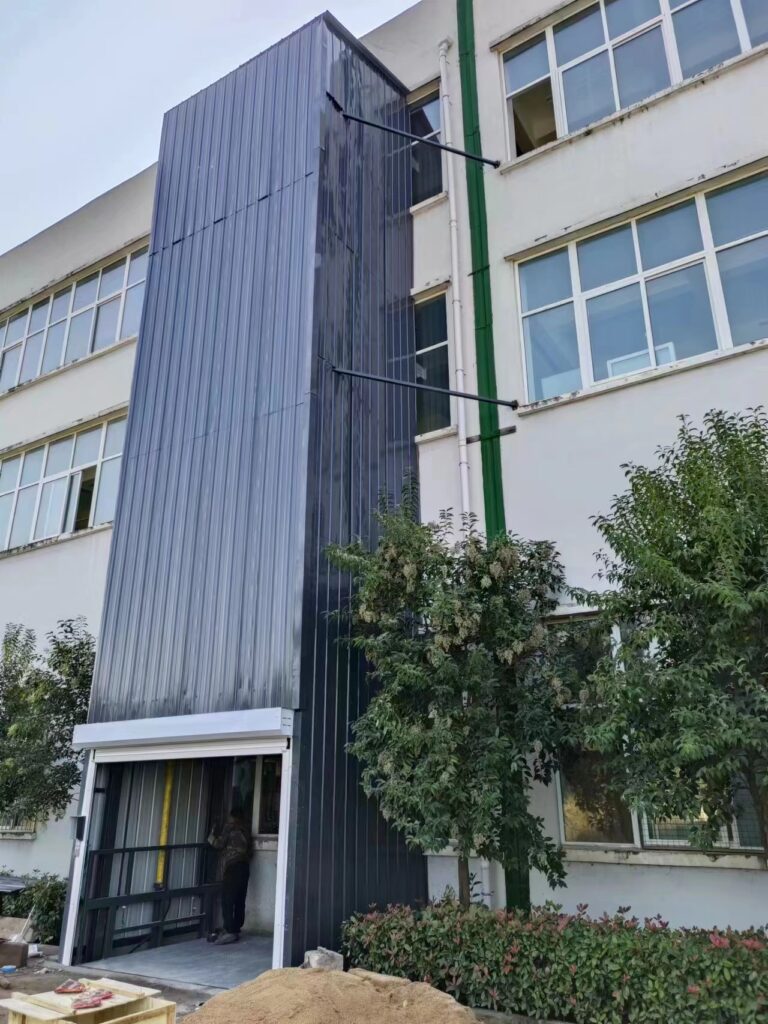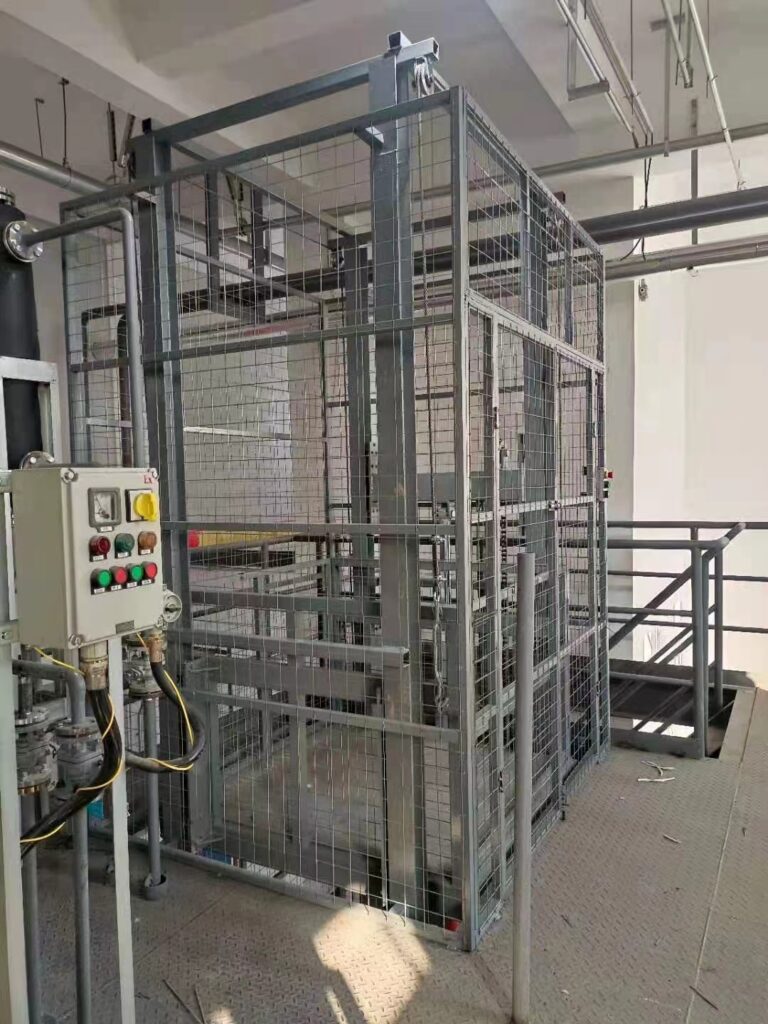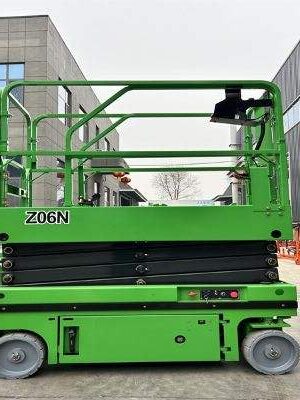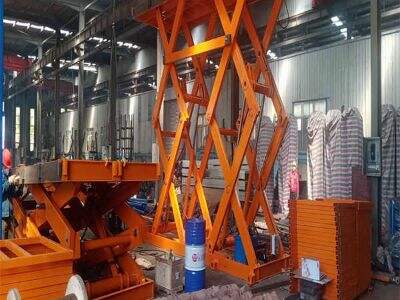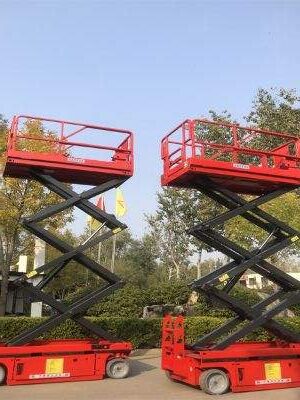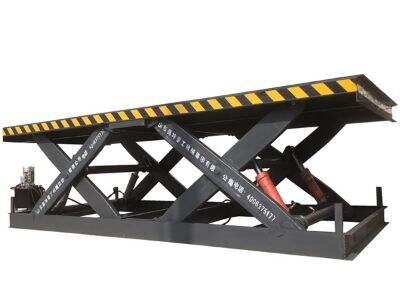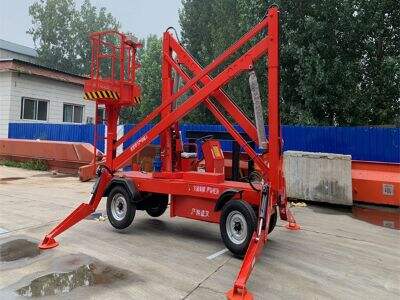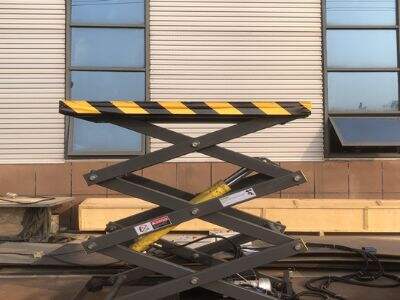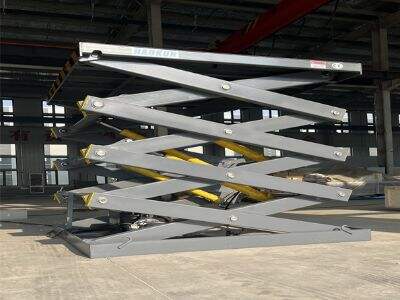- Introduction to Freight Elevators
1.1. Components of Freight Elevators
1.2. Applicable Scenarios for Freight Elevators
1.3. Core Advantages of Freight Elevators
Introduction to Freight Elevators
Freight elevators, also known as cargo elevators or freight elevators, are hydraulically driven lifting devices used to transport goods between floors.
Compared to passenger elevators, freight elevators prioritize load-bearing capacity, space utilization, and operational stability, enhancing durability and safety. They are suitable for frequent, heavy-load work scenarios, significantly improving cargo transportation efficiency and reducing labor costs. They are widely used in industrial plants, warehouses, shopping malls, and other locations.
Freight elevators are customized to fit specific dimensions, with heights ranging from 1 meter to 30 meters and weights from 0.5 tons to 50 tons. Platform dimensions are also customized to meet specific requirements.
Components of Freight Elevators
- Lifting System: Composed of a traction machine (power source), wire ropes/chains, guide rails, and a car. The traction machine provides power, driving the car vertically up and down along the guide rails via the wire ropes. The guide rails ensure smooth and stable car operation. The car is constructed of high-strength steel, and the interior space can be designed as open, enclosed, or with railings, depending on the type of goods transported.
- Door System: Divided into car doors and landing doors. Common types include sliding doors and vertical lifting doors. Equipped with safety interlock devices, ensuring the elevator cannot start if the doors are not closed, preventing goods or people from falling.
- Control System: Includes a control cabinet and operation panels (inside the car and on each floor), supporting manual operation, automatic leveling, floor calling, and other functions. Some high-end freight elevators can be connected to an IoT system for remote monitoring, fault warnings, and operational data statistics.
- Safety Protection System: The core protection module includes:
(1) Overload Protection: Automatic alarm and shutdown when overloaded;
(2) Fall Protection: Equipped with a speed governor and safety brake to quickly brake the car when the elevator overspeeds or falls;
(3) Buffer Device: Buffer installed at the bottom to reduce the impact force when the car falls;
(4) Emergency Stop Device: Allows manual stopping of the elevator in case of sudden malfunction, and works with emergency exits to ensure personnel safety.
- Load-Bearing Support System: Includes machine room (for traction freight elevators), shaft supports, load-bearing beams, etc., providing stable structural support for elevator operation. Depending on the installation environment, it can be designed as a machine room or machine room-less structure.
Applicable Scenarios for Freight Elevators
- Industrial Production: Cross-floor transportation of raw materials, semi-finished products, and finished products within factories, such as the transportation of equipment parts in machinery manufacturing plants and the transfer of raw materials in chemical plants (explosion-proof design required);
- Logistics and Warehousing: Loading, unloading, sorting, and distribution of goods in warehouses and logistics parks, using forklifts and pallets to improve efficiency, such as layered parcel transportation in e-commerce warehouses;
- Commercial Retail: Replenishment transportation of goods in shopping malls and supermarkets, such as restocking supermarket shelves and moving props for department store counters, usually designed in back-of-house aisles to avoid obstructing customer traffic;
- Construction: Transportation of building materials (steel bars, cement, scaffolding) at construction sites, often using mobile or temporary fixed freight elevators to meet the flexibility requirements of the construction environment;
- Other Scenarios: Transportation of medical equipment and supplies in hospitals, moving furniture and appliances in villas/duplexes, and heavy cargo transshipment at ports and docks.
Core Advantages of Freight Elevators
- High Efficiency and Labor Saving: Replaces manual handling, significantly improving vertical transportation efficiency, especially suitable for high-rise buildings and heavy cargo scenarios, reducing labor costs and handling time;
- Stable Load Capacity: Designed for cargo transportation, with strong load-bearing capacity and smooth operation, effectively protecting fragile and delicate goods;
- Flexible Adaptability: Multiple types and specifications are available, customizable according to site space, floor height, and cargo weight to meet different scenario needs;
- Safe and Reliable: Equipped with multiple safety protection devices, compliant with CE standards, reducing safety risks during transportation;
- Durable and Easy to Maintain: Utilizes high-strength materials and mature transmission technology, with a low failure rate, controllable maintenance costs, and long service life.
